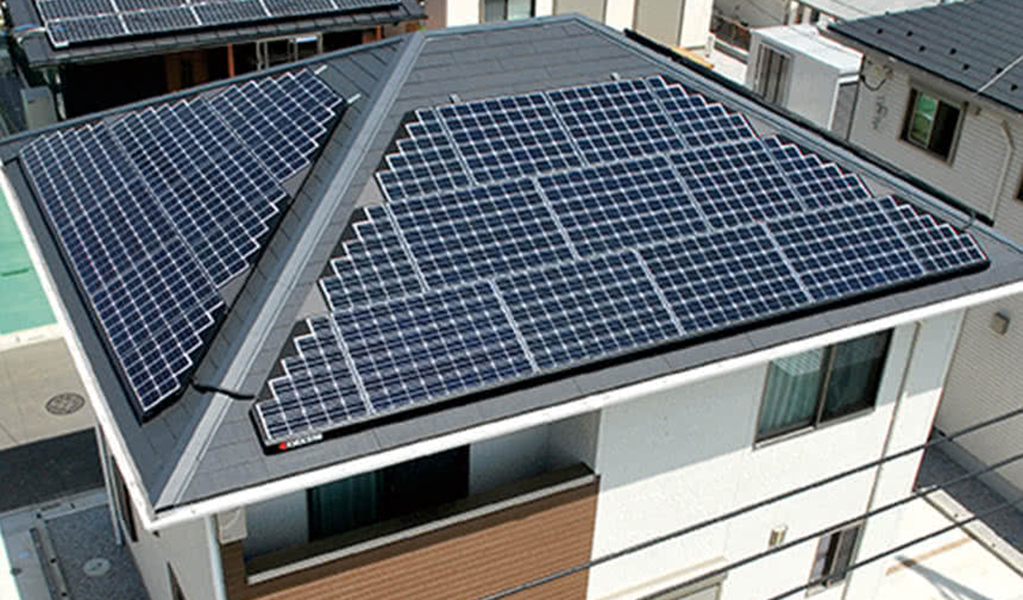Management of Chemical Substances
Compliance with Chemical Substance Regulations
In recent years, regulations for the proper use and management of chemical substances have been strengthened in countries around the world with the goal of preventing harm to people and the environment. This has caused companies to recognize the need to manufacture more environmentally friendly products. In addition to ensuring compliance with regulations and strict management of the chemical substances contained in our products, Kyocera will continue working in close cooperation with our business partners to reduce environmental risk and promote the realization of a sustainable society by accurately confirming the presence or absence of regulated substances throughout the supply chain.
Managing Chemical Substances in Cooperation with Business Partners
To actively address increasingly serious environmental issues across the planet, Kyosera recognizes the importance of establishing and implementing initiatives not only internally, but also in cooperation with our business partners throughout the supply chain. Kyocera has been ensuring the strict management of chemical substances contained in its products since fiscal 1998, and its environmental and safety policy is posted on its official website. In addition, we have formulated the Kyocera Guidelines for Environmentally Hazardous Substances to stipulate standards for product specifications with the goal of strengthening cooperation with our business partners.
Kyocera Guideline on Environmentally Hazardous Substances
| English version [Ver.15] | |
| Kyocera Guideline on Environmentally Hazardous Substances (Requirements for Suppliers) |
(pdf/553 KB) |
Application Form
| English version | |
| Application Form of Kyocera Guideline on Environmentally Hazardous Substances* | (excel/242 KB) |
The Excel file includes the following forms in each worksheet.
- [General] Form 2 Certificate for Nonuse of Prohibited Chemical Substances
- [General] Form 3-1 Report on Constituent Contents (Chemical Substances and Preparations)
- [General] Form 3-2 Report on Constituent Contents (Articles)
- [General] Form 4 Certificate of Constituent Contents
- [General] Form 5 Application for Change
For more information on chemSHERPA, please visit to the following external link.
Kyocera Guideline on Environmentally Hazardous Substances/Application Form (Connector Products Division, Corporate Electronic Parts Group)
| English version [Ver.27] | List of Environmentally Hazardous Substances [Attachment 1] | |
| Kyocera Guideline on Environmentally Hazardous Substances of Connector Application Form | (pdf/583 KB) | (excel/936 KB) |
Kyocera Guideline on Environmentally Hazardous Substances/Annex (Corporate Display Group Version)
| English version [Ver.3] | |
| Kyocera Guideline on Environmentally Hazardous Substances Corporate Display Group Annex |
(pdf/332 KB) |
Development of Environmentally Friendly Products
The Kyocera Group believes that all its products should have a positive impact on the global environment, and continues its commitment to developing environmentally friendly products such as its lineup of fine ceramics, solar power generation systems, solid oxide fuel cells (SOFCs), and LED lighting.




(Bio-material handle)
Environmentally Conscious Designs for Printers and Multifunctional Products (MFPs)
Kyocera Document Solutions Inc., which produces and sells printers and multifunctional products (MFPs), conducts environmentally conscious activities in various aspects including longevity design that reduces part replacement or disposal; 3R design that focuses on “reduce,” reuse,” and “recycling;” and low consumption power design that reduces greenhouse effect gas emission. In the design stage, designs are developed based on the Environmentally Conscious Design Standard from the initial development stage of new products through each of the subsequent development steps. The Environmentally Conscious Design Check Sheet is then used to make sure designs are environmentally conscious during product development. Kyocera Document Solutions Inc. also conducts a life cycle assessment (LCA), which digitalizes the resources, energy, and waste used or discharged for products or services during the stages from the acquisition of resources to manufacturing, transport, use, and disposal/recycling for all products to reduce the environmental burden of our products.
Life Cycle Assessments

Compliance with Environmental Product Standards
Kyocera Document Solutions Inc. is committed to producing environmentally conscious products and actively acquiring Environmental Labels.
The Environmental Label contains three types as specified by the International Organization for Standardization (ISO), or Type Ⅰ (label for or with which a third party independently conducts product categorization and establishes the judgment criteria and certifies compliance); Type Ⅱ (self-declaration type label for which a company independently established the criteria and holds that its products are made environmentally conscious); and Type Ⅲ (label for which the environmental loads of a product from resource acquisition to disposal are calculated based on the life cycle assessment technique and are disclosed based on quantitative analysis). Kyocera actively promotes acquisition of those certification programs. To be specific, when Kyocera manufactures products, we always attempt to create products that can satisfy the required criteria of major environmental labels (Type Ⅰ), such as Eco Mark, Blue Angel, EPEAT, or International ENEREGY STAR® Program as early as their development stage.
For Eco Leaf environmental label (Type Ⅲ), we manufacture products that have less environmental loads and actively register and disclose environmental information of products.